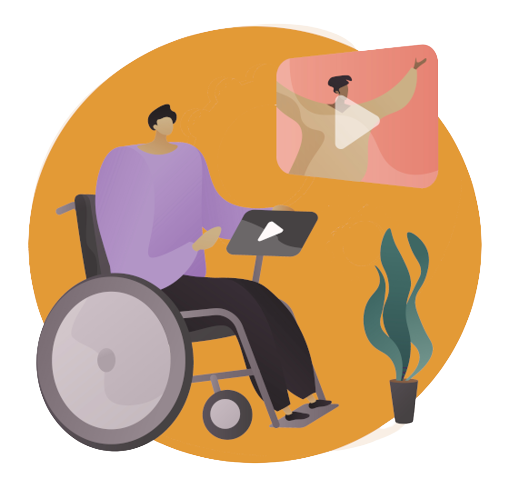Health and Medical
Health & Medical Appointments
People diabetes need to have regular check-ups with their diabetes health team to monitor their health and ensure that they have the opportunity to have the gest health possible.

General Medical Appointments
A general practitioner might do the following at an appointment.
Check weight:
- Weight gain can be a serious problem for diabetics, putting them at greater risk of long-term complications such as heart disease. The doctor will compare the person’s weight between visits and provide recommendations to lose weight if needed to improve the person’s health.
Check blood pressure:
- This is an important test to indicate whether there are any concerning spikes in blood pressure, which put the person at greater risk for heart disease.
Ask for a kidney function:
- This should be done annually or sooner if required. This consists of a urine test to measure the urine albumin-creatinine ratio (uACR) and a blood test to measure the estimated glomerular filtration rate (eGFR). Together, these tests can check for early signs of diabetic kidney problems.
Routine full blood tests:
- Perform routine full blood tests annually checking for Cholesterol and triglyceride levels and checking HbA1c levels every 3-6 months depending. This enables the doctor to monitor levels and make adjustments to treatments if neccesary.
A podiatrist will:
Examine the feet for any possible problems, cut toenails correctly, and make recommendations for foot care. It is recommended that those with diabetes see a podiatrist every 6 months (unless otherwise recommended).
An eye specialist will:
Examine the eyes for any damage to the blood vessels. They will use an ophthalmoscope to look through the pupil of the eye to check the retina. Some drops may need to be used in the eye, which can sting and cause blurred vision for a couple of hours after the visit, particularly in bright lights. Wearing sunglasses outside may help and support will be required during this time.
A dietician will:
Take a detailed history of food currently eaten (prepared at home and take-away), ask about likes and dislikes, identify any barriers to healthy eating, and provide practical advice on healthier food choices. They may also take some measurements of weight, height etc to help determine BMI.
Diabetes Educator
A diabetes educator will obtain a detailed history of how the person’s diabetes was diagnosed, their current knowledge of diabetes management, and how they are managing their diabetes currently. They may instruct the person on how to monitor their blood glucose levels, how to inject insulin, where to purchase a blood glucose meter, and register them with the National Diabetes Service Scheme (NDSS). They will also discuss exercise, medications, insulin dosage modification, provide hypoglycaemia treatment and prevention education, and answer any questions regarding treatment or management of diabetes.
Getting the most out of diabetes medical appointments
It will be beneficial if the support person knows:
- What the appointment is for
- If the person is unwell or in pain
- History of BGL readings including interventions
- If their symptoms have occurred in the past
- What they have noticed about the person’s condition
Who and what to take to your appointment.
- Somone who knows the individual well and provides regular supports.
- Their diabetes management plan (use this to ask the doctor any unanswered questions or for clarification)
- Details from other diabetes healthcare specialists
- Blood glucose level results
- A list of current medications
- Referral letters
Ensure the person has:
- Their list of what they wish to discuss with the doctor.
- Any alternative communication systems they use.
- Activities they can do in the waiting room.
- Things that make them feel safe/relaxed.
Procedures the doctor may want to do:
- Check blood pressure.
- Feel the stomach.
- Examine eyes, ears, nose, throat, and feet.
- A blood and urine test
- Measure weight and height
Long-term Complications
Prolonged out-of-range blood sugar can have a negative impact on an individual’s health. There are a number of significant long-term health issues that can arise as complications from diabetes, which are important to be aware of.

Specific Complications
Eye Problems (diabetic retinopathy)
High blood pressure over a long period of time can cause serious damage to the blood vessels supplying the retina. When damaged, vessels can become blocked, leak, or grow randomly which can result in the retina not getting the blood it needs. This leads to problems with vision and can eventually cause blindness if left untreated.
Signs to look out for include
- Blurred vision.
- Reporting seeing flashes of light.
- Reports of pain
- Reports of dry, itchy and irrated eyes with no known obvious cause.
If an individual reports these medical attention should be sought by seeing an ophthalmologist. Eyes should be checked frequently for blurred vision. This can be done by asking the person about their vision or observing their movements. If the person often bumps into things, trips while walking, or misses their food while trying to put it on a fork or into their mouth, these can all be signs of poor vision. A routine eye exam should occur every 12 months unless directed otherwise.
Foot problems
It is important that people with diabetes pay special attention to foot cares, especially if they’ve had previous foot ulcers or have been told they are at high risk of foot problems by their doctor. High blood glucose levels over a sustained period can damage circulation, putting the individual at higher risk of developing foot problems and can potentially lead to amputation if left untreated.
It is recommended that time is taken each day to check for changes in foot health, this can be done during ADL’s such as bathing and dressing. To avoid foot problems, the person should wear comfortable, well fitted and supportive foot protection (shoes), see a podiatrist for foot care and nail cutting and avoid soaking the feet. The below list are some warning signs that require medical attention:
- Tingling sensation or numbness.
- Pain or burning.
- Dull aches.
- Shiny or smooth skin on feet.
- Hair loss on legs or feet.
- Redness or swelling.
- Feet do not sweat.
- Wounds that are slow healing on the feet.
- Ingrown toenails.
- Corns or calluses with skin discoloration.
- Calf cramps when resting or doing exercise.
Cardiovascular disease
Heart disease is another complication of diabetes, with heart attacks and stroke being the leading cause of death in this population. High blood glucose, high blood pressure, high cholesterol, smoking, obesity, and family history all contribute to heart disease. To reduce risk of developing cardiovascular issues, it is important to maintain a healthy lifestyle. Ways to do this include:
- Taking medications/insulin as directed by the doctor.
- Remaining physically active.
- Being smoke-free.
- Limiting alcohol intake.
- Managing blood glucose and blood pressure levels.
- Eating a healthy diet.
Kidney problems (diabetic nephropathy)
Prolonged high blood glucose and high blood pressure can affect the filtering system of the kidneys, making it more difficult to clear fluid and waste from the body. Filters in the kidney can become leaky, causing abnormal amounts of protein from the blood to leave the body in urine. Nearly one in five people with diabetes will require treatment for nephropathy in their lifetime, although the condition develops slowly over many years. For this reason, it is important that kidney checks are conducted yearly so disease can be spotted early and slowed down with treatment. Symptoms of kidney disease include, blood in the urine, feeling lethargic, shortness of breath, feeling sick and swelling of the ankles, feet, and hands. To reduce the risk, people with diabetes should eat a balanced diet, stay active, monitor their blood pressure, keep blood glucose levels within their target range, quit smoking and attend all their regular medical appointments.
Nerve damage (diabetic neuropathy)
Diabetes can damage nerve endings in the hands, feet, or organs. Once nerve damage occurs it is irreversible, but symptoms can be managed with appropriate treatment determined by a doctor. When high blood pressure persists over time it can cause damage to the blood vessels that supply nerves in the body, preventing essential nutrients from reaching them and causing damage to nerve fibres. Symptoms of neuropathy should be investigated further by the person’s diabetes healthcare team and include:
- Tingling and numbness
- Reduced sensation.
- Inability to feel pain.
- Inability to detect temperature changes.
- Loss of coordination.
- Muscle weakness or twitching.
- Loss of bladder control.
- Gastroparesis
- Shooting or burning pain that may worsen at night.
Promoting Independance
Everyone’s day to day support requirements are different. Although it is important for support people to understand and provide support and assistance as required to the person with diabetes, it is also important for the individual to self-manage their diabetes where appropriate.

How to promote independence
How people learn
Everybody learns differently. Some people need to see the ‘big picture’ first whilst others need to learn the little bits and pieces that make up the big picture. Some people learn by listening whilst others learn by pictures, diagrams, or being shown how to do a specific task. It is important to understand the person’s needs in order to properly teach them the skills they need to manage their diabetes. Before you begin, get to know the person you are supportingthat it is easier to explain and assist them. Make sure to know/find out:
- Their preferred communication style.
- Their individual ability.
- Their preferred learning method, i.e., doing, watching etc.
- What they would like to do independently and what if any assistance they would like.
- Who the key people are that need to be involved (family, staff, health professionals)
Explaining diabetes
- Speak clearly, using simple terms in an environment with minimal distraction.
- Listen to what the person says or indicates.
- If the individual learns by doing, demonstrate what you are explaining.
- Go through instructions step by step.
- Ask the individual to repeat the steps back to you to ensure no missed communication.
- Ensure feedback is positive and encouraging rather than negative.
Learning opportunities
- Involve the individual in their menu planning, picking and purchasing shopping.
- Teach the individual how to cook through demonstration and utilising menu plans.
- Discussing their blood sugar test results and explaining the implications of high versus low readings.
- Encouraging exercise and discussing the benefit it has on diabetes management.
